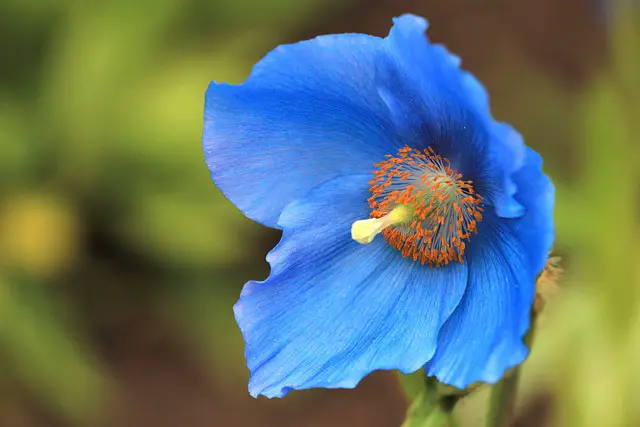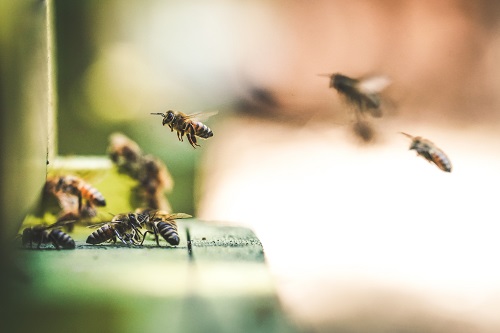Plants with Blue Flowers You Should Add to Your Garden
We rarely catch sight of blue flowers. That is because out of all the species of flowering plants, only 10 percent of them yield blue flowers. These blue blooms are rare and adding them to your garden will instantly make it stand out. Just imagine your garden with the sea of blue flowers in the beds. Ahhh… dreamy right?
Here is a list of 7 flowering plants that will yield mesmerizing hues of blue flowers.
Lobelia (Garden Lobelia)
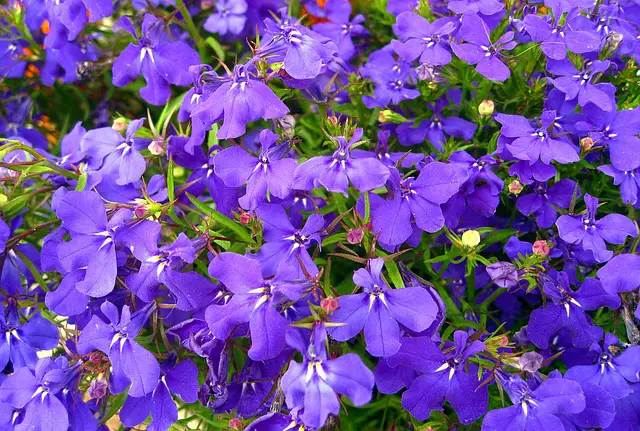
Lobelia starts way back in history with great medicinal values. These flowering plants are blessed with every shade of blue there is. So you wouldn’t find any better representation of blue flowering plants than lobelia. These are native to the tropical regions of South Africa. These are perennial flowers that are grown as annuals. Traditionally, it was a trailing plant and that is why it is great to keep on balconies in hanging baskets and window boxes. But the new cultivars have the characteristics of growing upright.
You can also read our tips on how to fertilize your grass to make it grow faster.
Care:
Since these plants belong to the tropical side of South Africa, they cannot take intense heat. Lobelia likes lots of sunlight (6 to 8 hours) but colder temperatures. They require even, well-drained but moist soil. The container-grown ones need regular watering. Although the annuals do not require deadheading, we recommend doing so around midsummer to keep them from getting wild.
Centaurea Cyanus (Cornflower)
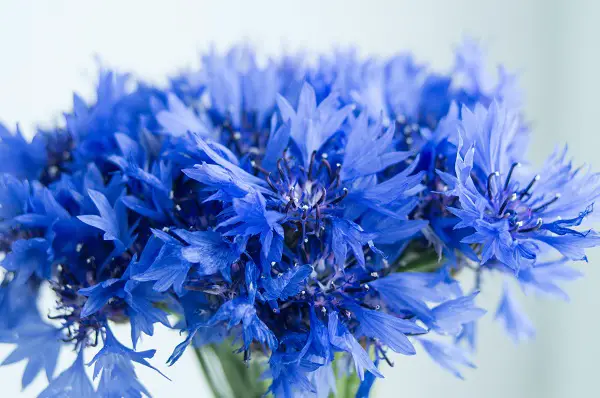
Truly a mesmerizing blue flower to add to your garden, cornflowers are annuals that are also called bachelor’s buttons. These flowers are not only mesmerizing to us but to the pollinators also (bees and butterflies to be precise). With their fringed petals and grey-green foliage, cornflowers give your yard a perfect cottage garden look. Although the flowers come in many colors, crisp blue is its only true color that exists naturally.
Care:
When it comes to watering, these flowers are non-fussy. They can prove to be drought-tolerant and can also thrive well when watered regularly. But make sure you give them fertile and rich soil to grow. These are relatively cold-hardy plants that require full sun. Just don’t plant them too close to each other as they hate claustrophobic conditions.
Salvia (Blue Sage)
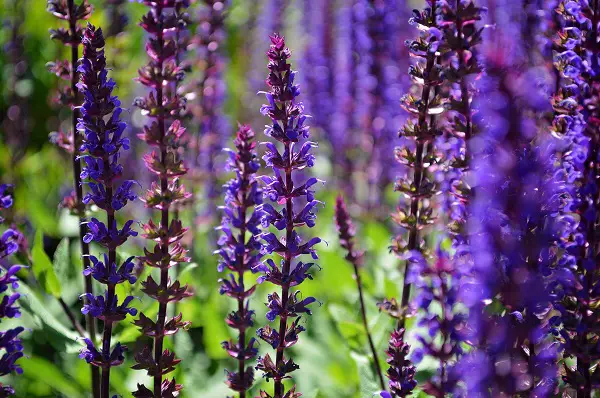
Salvia is an upright growing, beautifully fragrant blue flowering plant. The flowers are densely packed at the end of the tall stem. They are perfect to grow in coastal areas where other flowers might refuse. Salvia is extremely nectar-rich that can attract a lot of pollinators to your garden, bees, butterflies, and hummingbirds are just to name a few. This is the reason for them being used as companion plants. The blue-colored perennial selection is called Blue Sage.
Care:
It needs moist soil to thrive but make sure that it is not waterlogged. And sometimes it even likes dry soil. Blue sage loves full sun but not hot temperatures. Pinching the plants twice a year is recommended for maintenance.
New to gardening? Keep things simple with these 10 most popular types of Aloe plants to grow in your home environment.
Agapanthus (African Lily)

Commonly known as the “Lily of the Nile”, Agapanthus is a perennial flowering plant that has clusters of delicate blue flowers that grow at the top of long thin stems. With their beautiful blossoms that attract pollinators, they can be a terrific addition to your landscape. You can even grow them in pots or containers for your patio decks. Agapanthus bloom in the summers and are very forgiving in terms of maintenance. The common colors for the flowers are hues of blue but they can be found in white and pink, though rarely.
Care:
Agapanthus doesn’t like waterlogged soil at all. It might become the cause of root rot for them. Do not over-fertilize them as it might make the plant more prone to damage. Like most flowers, agapanthus likes soaking up the sun. Once done with blooming flowers, cut the stem away but leave the foliage to make room for the fresh stalks to appear in the growing season.
Nigella Damascena (Love in a Mist)
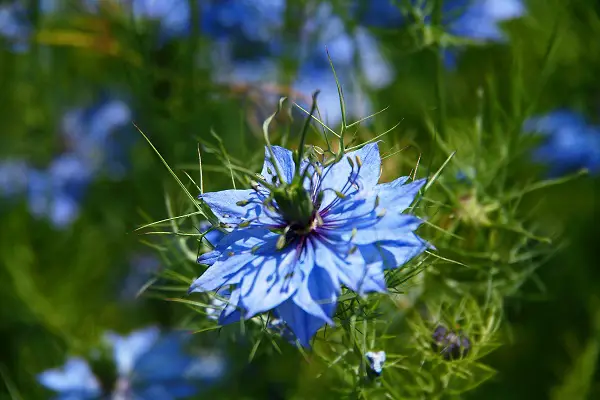
“Love in a Mist”, Isn’t the name dreamy? Yes, this is what Nigella Damascena is commonly called. Apart from a dreamy name, they have even dreamier blooms. Blue flowers are standard for Nigella Damascena but many cultivars produce pink and rose-colored flowers. This is a very popular cool-weather annual to grow in your yards. They are great for cottage gardens, containers, flower beds, and borders. Bees love them because of their nectar.
Care:
Nigella Damascena requires full sun and is easily grown in moist but well-drained soil. These plants like their moisture whether in the soil or the air. If you want to extend the blooming period, we suggest deadheading the dead flowers. Give them fertile soil and they will reward you with more flowers.
Meconopsis (Himalayan Blue Poppy)
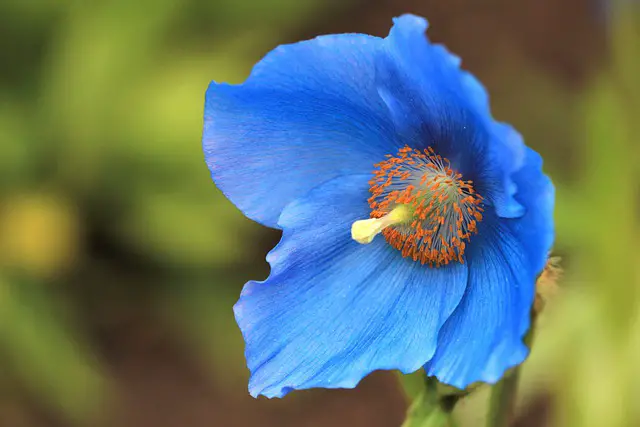
Himalayan blue poppy is as exotic as one might expect it to be. This grows in climatically cooler regions and is native to Tibet where the summers are cool and moist. They are short-lived perennial plants but the short period is worth the beautiful vibe it will exhibit in your garden provided that you give the exact growing conditions it demands. Meconopsis does look like the rest of the poppies but with a very unique shade of blue. Blue poppy is a great pollinator as it attracts a lot of bees and butterflies.
Care:
Blue poppy is very specific about its care conditions. They prefer slightly acidic soil with good drainage. Add organic matter to your soil to make it nutrient-rich, which this plant demands. Plant them in a spot where they get part shade and part sunlight. Just protect them from strong winds.
Convolvulus Tricolor (Morning Glory)
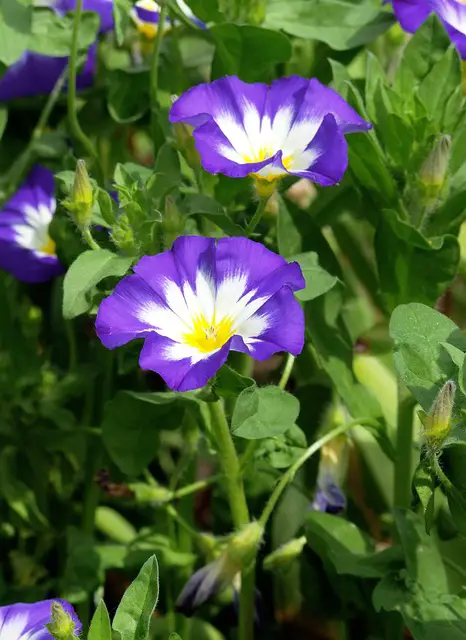
Morning glories are very popular vines to grow amongst the gardeners because of their beautiful blue and violet flowers and the easy-care routine. They are fast-growing annuals that bear trumpet-shaped flowers. Be prepared to see a lot of hummingbirds in your yard if you plant them. Grow them in pots and hanging baskets that can be placed on your patio. They make great flower beds as well.
Here are some ideas to cover and decorate your patio and make it a perfect, little hang-out spot with friends and family.
Care:
As the name suggests, they are very specific about their morning sun (the flowers unfold as they receive the sunlight and fold back once it’s dark). So, to ensure that they bloom to their best potential, place them in a location that receives plenty of sunlight. Morning glories are very easy to grow plants that can tolerate both warm and cool climates. Once they are established from seeds, don’t water them too much. They like their soil to be on the drier side. Don’t prune or deadhead them as they grow from their own seeds.
It is indeed a sight of rare beauty when you see blue flowers. So why not plant these rare beauties in your garden to add more appeal to it. Not only that but these flowers will be a center point for a lot of pollinators.

